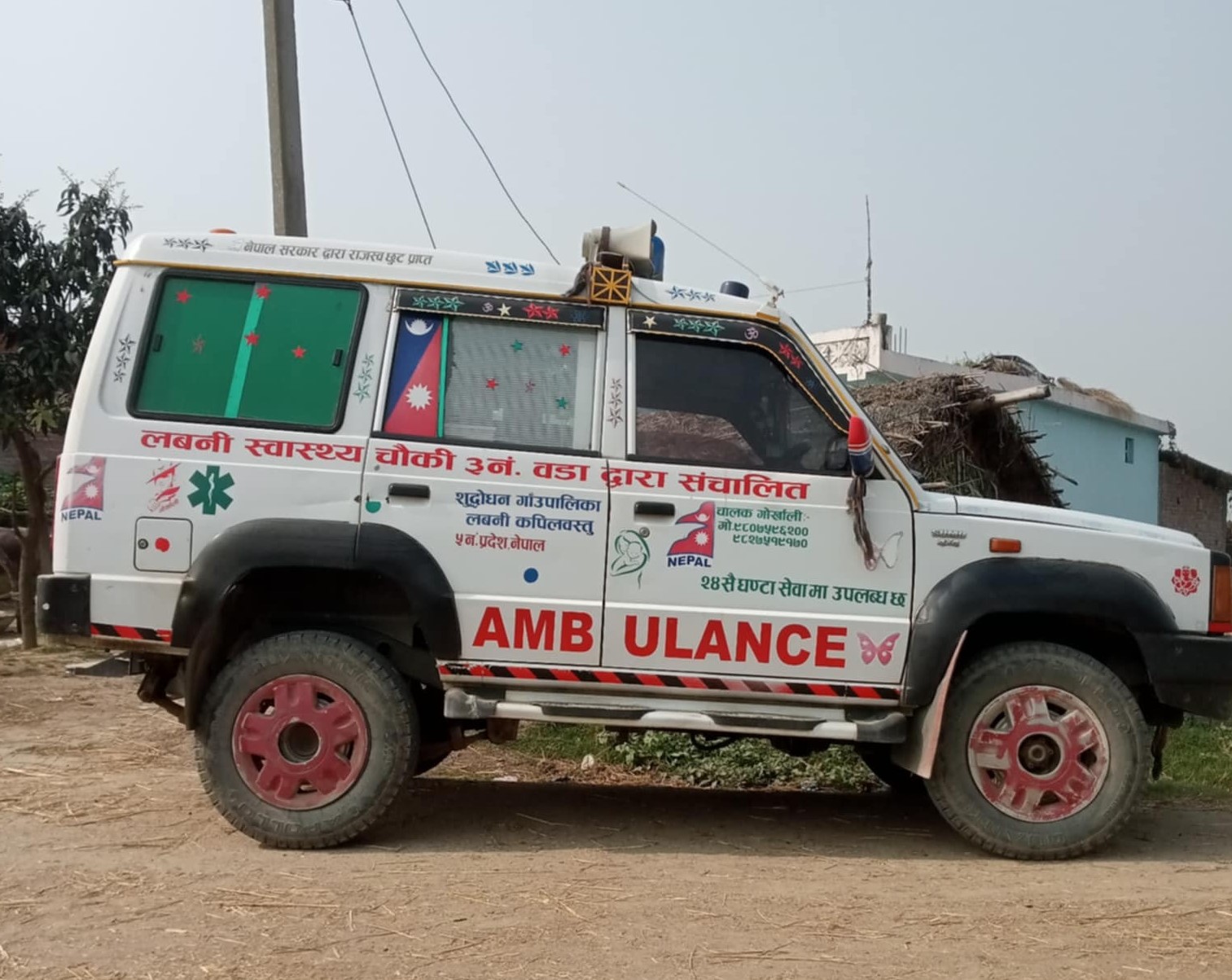In many parts of Nepal, particularly in the rural areas, getting to a hospital during an emergency can be a daunting task. Long distances, poor roads, and lack of transport are among the most common barriers, especially for people without the means to procure a vehicle in a timely fashion.
In Suddhodhan Rural Municipality of Kapilvastu District, this story is not unfamiliar. However, since 2017, the authorities have made concerted efforts to rectify this issue. In the lead-up to local elections that year, the provision of free ambulance services was a major commitment by local leaders. The Mayor, Deputy Mayor, and ward chairpersons all promised to make it happen.
Remarkably, and against the odds, they did exactly that. With no dedicated funding at the start, and plenty of challenges along the way, the municipality launched free ambulance services across all six wards. It quickly became one of the most appreciated services in the area, offering people a way to reach care without worrying about the cost. This service is a boon that ensures medical assistance is not more than an arm’s length away from anyone within the municipality.
Getting Care at the Right Time
In rural areas, distance is often a significant barrier to health services. Many villages in Suddhodhan are far from birthing centers and hospitals, whether in they be in Bhairahawa, Butwal, Chitwan, or even Kathmandu. For people without vehicles, this meant delays in care, or no care at all.
The ambulance service has changed that. Now, in cases of difficult labor, road accidents, or sudden illness, patients can be transported quickly and safely. Residents of Suddodhan have reported that it gave them peace of mind, knowing help was not so far away anymore. And for families already struggling financially, removing transport costs made a massive difference.
Areas for Improvement
While the free ambulance service has made tremendous progress, there remain areas for improvement, namely:
- Funding: budgetary provisions are limited. Running ambulances requires fuel, maintenance, and staff costs, all of which can add up. With limited local revenue and decreasing federal support, sustaining the service is an ongoing concern.
- Availability: ambulance availability is hard to track. All six designated vehicles for Suddodhan are often busy, and there’s no central system to check which one is free or nearby in real time.
- Communication: people are not always sure who to call. Many still reach out to elected officials instead of contacting drivers directly, which can slow things down in emergencies.
- Politics: local political machinations sometimes gets in the way. There have been reports of people with political connections getting priority access, while those without connections are left waiting.
- Misuse: some drivers have misused the system. A few have charged unauthorized fees or taken patients to private hospitals where they receive a commission. This goes against the very idea of free and fair service.
- Policy: despite the access to live saving services, there remains a lack of clear policy or official guideline in place to ensure the service runs consistently and fairly.
Helping the System Work Better
HERD International is implementing a research to strengthen local health systems and to improve maternal health services as part of ReBUILD for Resilience in Suddhodhan Rural Municipality. One of the first things we helped with was drafting a proper Ambulance Service Guideline. This document lays out how the service should operate how to make sure it is used fairly and efficiently. It has now been included in the municipality’s Health and Hygiene Act 2024.
This is an important step. The ambulance service plays a key role in safe childbirth and other maternal health services, emergency referrals, and making healthcare more accessible for everyone. With a proper policy in place, there is now a clear path forward to keep the service running and ensure it serves those who need it most.
Looking Ahead
Although drafting sound legislation is important, there remain significant challenges to maintain the operationalization of free ambulance services. Budget cuts, delays in annual planning meetings, and low revenue collection all make it harder to sustain free services. Therefore, the monitoring and evaluation of service provision is just as important as the policy itself. From elected leaders to health staff to the community at large, everyone has a role to play to keep this service fair and functional. While it is a crucial initiative that started under difficult circumstances, there is still a long road ahead to keep Suddhodhan’s free ambulance service alive.












Comments (0)
No comments found.